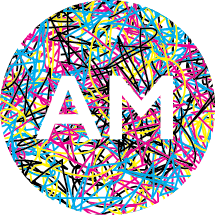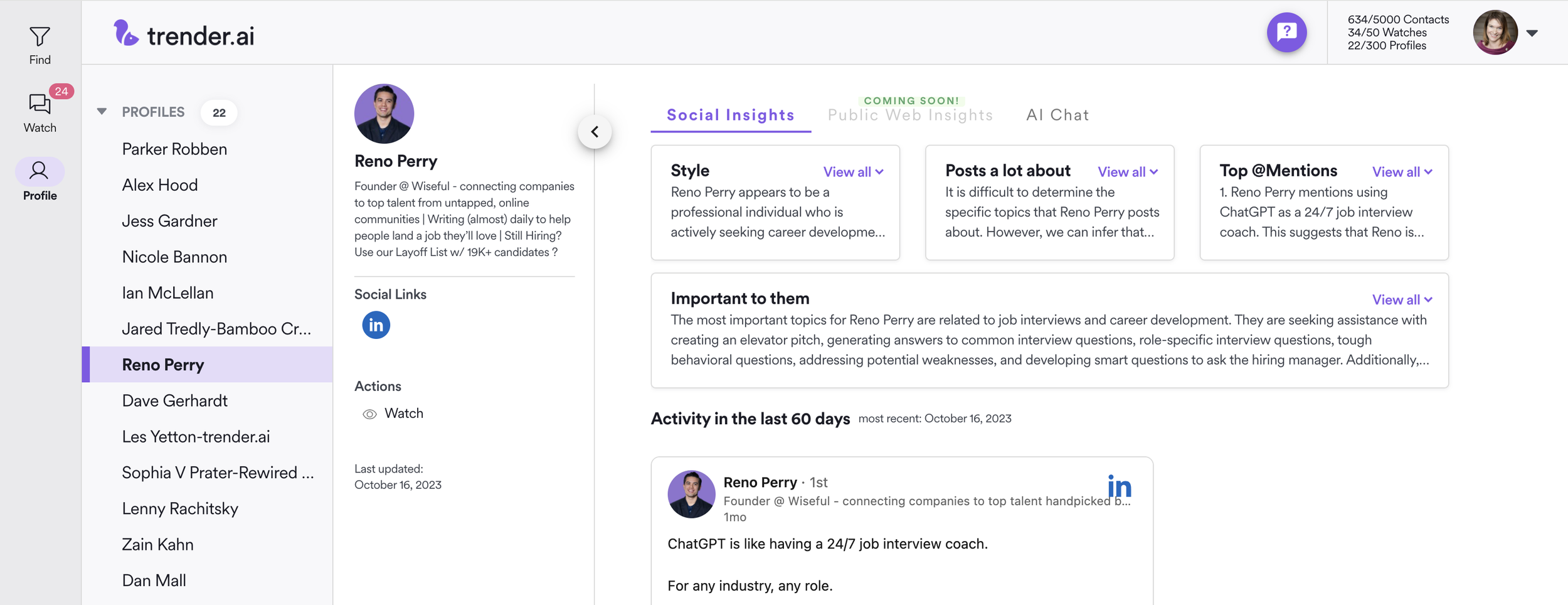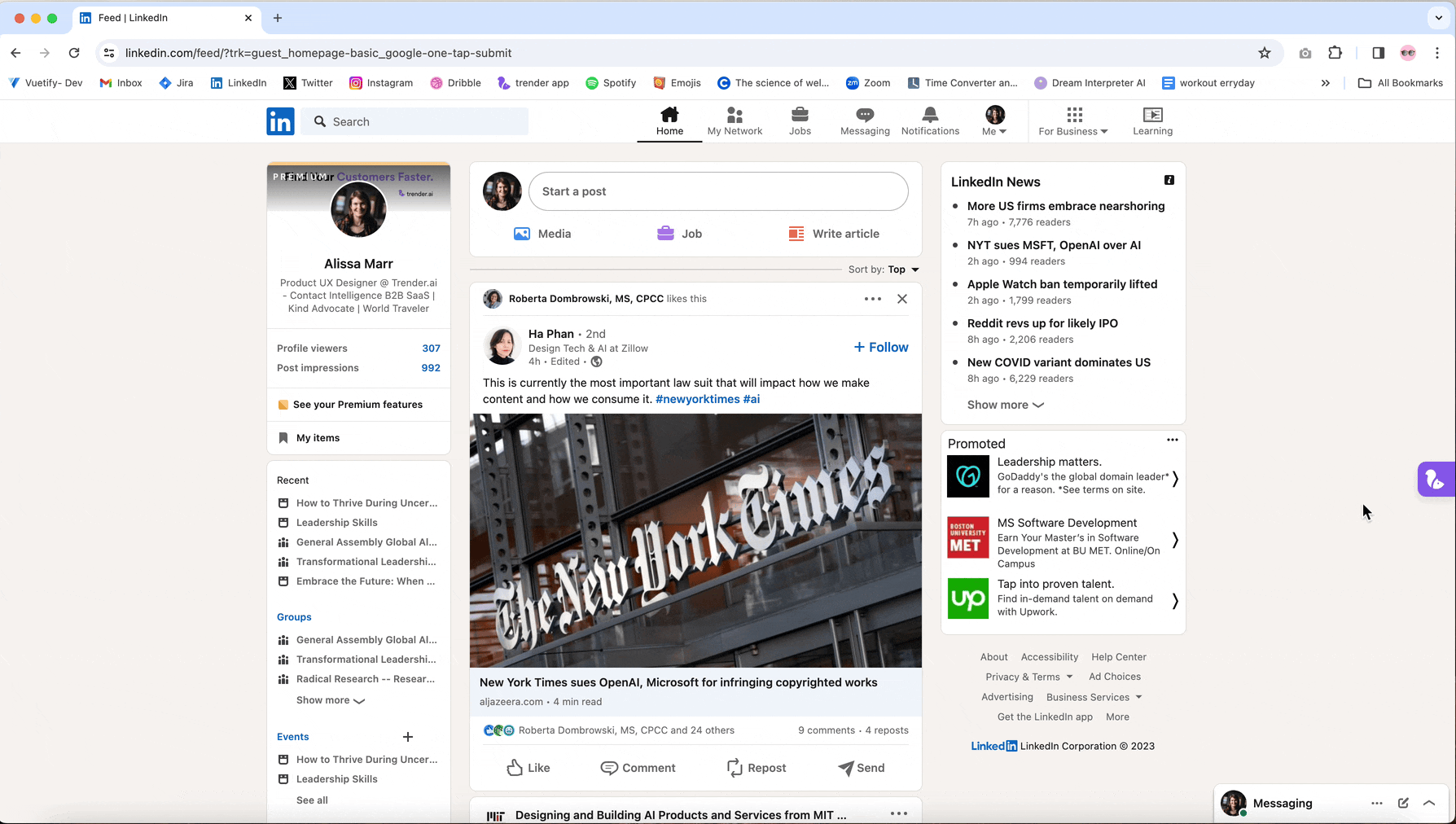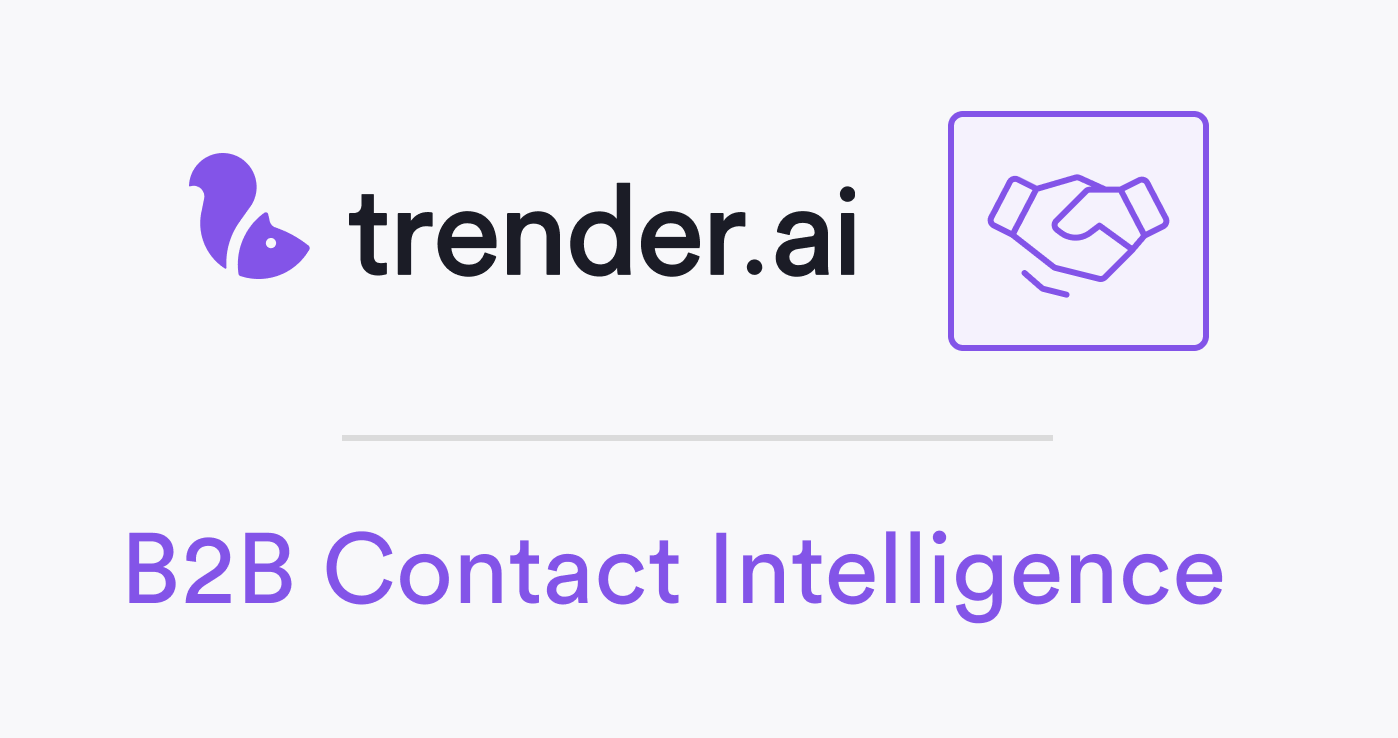Search Engine for Social - trender.ai
TL;dr We designed a search engine to streamline sales prospecting, saving 25 hours weekly by consolidating social, web data, and insights for individual prospects.
Context
Beginning in Spring 2022 our team strategized a redesign for our search engine for social media. After several iterations, users are obtaining dossiers with AI insights for each prospect in their sales funnel.
Read the case study for how my team and I solved this problem and upgraded the user experience!
Oh you can’t wait?
..The result
Meeting users in the apps they use daily increased the usability of trender.ai’s powerful search engine. Integrations make SaaS apps more sticky amongst the user base!
Trender.ai’s Chrome Extension (V1 released Fall 2023) aligns with innovations in industry-leading sales technology applications. Users can hover directly over a contact or company in LinkedIn, even in the comments and within a few clicks initiate multiple jobs into trender.ai’s search queue.
👇 trender.ai Chrome Extension demo below.
Open chrome extension, hover over a name, instantly use trender’s prospect profiling tool.
Project Overview
My role: End-end Product Designer
My Team: UX Research by VP of Product, 1 FE Engineer, 2 BE Engineers, 1 ML Engineer
Duration: Spring ‘22 - Fall ‘23 (Multiple iterations)
Deliverables: Persona, Competitive Analysis, Design Thinking, User Flows, Storyboards, Sketches, High fidelity Prototypes, Google Chrome web store graphics
The Prod
Trender.ai is a B2B Contact Intelligence SaaS, which streamlines the process gathering intel on prospects.
Trender’s proprietary AI algorithms scrape the internet for public web and social media posts authored by or @mentioning any person, company, or keyword; collected into a centralized feed.
User Problems
Goals and Measuring Success
Trender.ai aims to cut prospect research time by 50%.
Reduce sales teams manual research so they can qualify leads at speed.
Take away friction of the search functionality in trender app.
Success was measured through Sales demos with trender VPs.
Where it started..
From the beginning trender.ai was a search engine for social media. BUT It was messy, broken, and a confusing user experience. This is the story of one of our most impactful design iterations for the core trender.
Initiating a Search
When I joined trender, searches initialized through a form to fill out (not shown). Friction was pertinent; the design barely suggested what to search for.
View the starting user flow below 👇.
👥 Users often left the form, essentially leaving the app altogether.
Hick’s Law: increased number of choices increases decision time. Users were perplexed with indecision. The form was asking for too much user bandwidth.
We set out to simplify the search experience, decreasing the amount of choice.
Google for social media?
Iteration 1: Search Bar
We hypothesized the familiarity of a search bar would help a user’s mental model. (just type keywords into Google tada!)
👎 Result > Users entered names or keywords which were not closely related..
Our AI model returned poor quality social posts. Users imagined a feed of super high quality posts, but since our AI algorithm was confused, they got watered down results.
Search bar design with CSV import and Search setup wizards
👥 What users thought
The design looked like a search bar, so users understood its use. But unfortunately it put too much trust on the user.
Through usability testing, we realized not many users knew how to use this specific type of search bar. The limitations and strategy were difficult to explain.
Placeholder solution: Added a video to onboarding flow to explain the strategy of search. Increasing usability by 10%
Getting more specific
At this point in the roadmap, our VPs decided we were better positioned in the market as a Sales app (instead of marketing). So we cut out the advanced search features like keywords and hid them for power users.
Iteration 2: Company or Contact Specific
Very specific fields with ONLY the company or contact name made trender an obvious tool for sales prospecting.
👋 Result > Streamlined prospecting simplified choices, woohoo! But users claimed it is too much work to manually add all this information PLUS social media profile links. (and we agreed.)
Step 1: Search for company or person
Step 2: Fill out Contact details
👥 What users thought
Users understood what to do, and were getting great results in their feeds.
Chatting with users revealed the setup time was too steep. Users were getting the idea of trender but the experience was still bad.
Mistakes were made
—We were NOT aligned with the industry standard in innovations. We were very late to release a Chrome Extension. Looking back I kick myself for not knowing what our competitor’s top performing products were!
make it instant
Iteration 3: Enter the Chrome Extension
Manual entry? Nope! We took inspiration from Apollo.io and designed our own Google Chrome Extension! This now works inside LinkedIn and LinkedIn Sales Navigator, (future is Hubspot).
Our Google Chrome extension puts minimal effort on users. Roll-over names and click to place 20+ companies or contacts into the trender.ai queue within minutes!
🙌 Result > Streamlined prospecting, woohoo!
trender.ai Chrome Extension - Rollover names, companies, it even works in the comments!
👥 What users thought
Users were psyched!
B2B Sales teams are in LinkedIn all day. Trender became part of their workflow.
The Chrome Extension made trender.ai competitive against industry leading sales tech SaaS apps.
Wait, there’s more!
For an AI company we need to communicate algorithmic nature and limits to set realistic user expectations.
We switched to the term “watch” instead of search. A person’s mental model for the term “search” believes they will receive immediate results. Our AI model takes time to go through hundreds of thousands of posts; processing time varies.
Teach users and set expectations
Several improvements helped users understand “watches” and their limitations.
First-time message about how long it takes to get results.
Processing queue. Users can see that yes, their watches have started.
Clear in-app feedback.
New content Email/Slack alerts.
In Reflection
Utilizing competitive research from industry-leading sales tech companies further along than us, like Apollo, is crucial. In order to innovate I need to always be aware of the current level of innovation in sales tech.
Too many choices leads to bad choices. I learned that users want to know exactly what to type into trender. We originally thought that giving flexibility on what to search for was ideal, but quickly found it was too hard.
It can be tricky to find a balance of over explaining vs not enough feedback when designing an AI app. We now assist users heavily with explanations on what is going when they press send. Full transparency clears frustrations and users won’t think the app is broken 😂.










